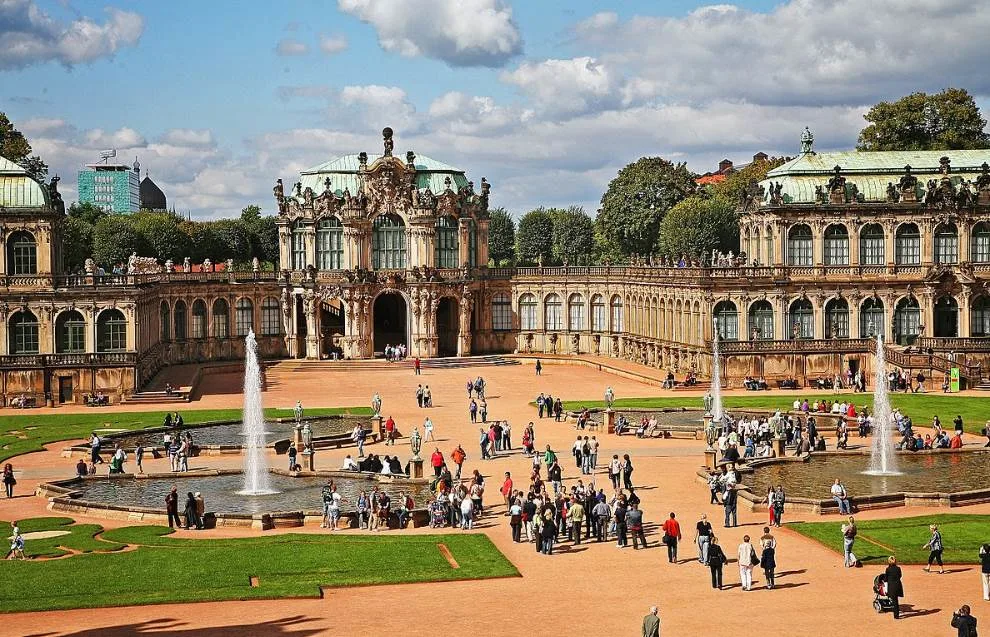They were built by the monarchs of numerous countries, and in this post, you can discover a list of some of the most famous palaces in the world.
Related: Check out some of the most amazing castles in Europe!
1. Palace of Versailles
The Palace of Versailles is one of the most astounding palaces ever built. It became the royal residence of France from 1682 until the start of the French Revolution in 1789 in which the royal family was forced back to Paris.
The famous palace in France was mainly built by Louis XIV and was meant to overwhelm, which eventually would lead to the demise of the monarchy. Its most famous attractions are the Hall of Mirrors, the Royal Opera, the Royal Residences, its immense garden and park with numerous fountains, and last but not least, the two castles located within the compound, the Grand Trianon and the Petit Trianon, and last but not least, the Hameau de la Reine, built by Marie Antoinette.

2. Buckingham Palace
Buckingham Palace is located in the City of Westminster in the center of London. It’s the royal residence and administrative headquarters of the monarchy of the United Kingdom and was originally known as the “Buckingham House” as it originally served as the immense townhouse of the Duke of Buckingham.
The original townhouse was constructed in the year 1703 and was acquired by King George III in 1761, after which it was transformed into the palace it is today, mostly during the 19th century.
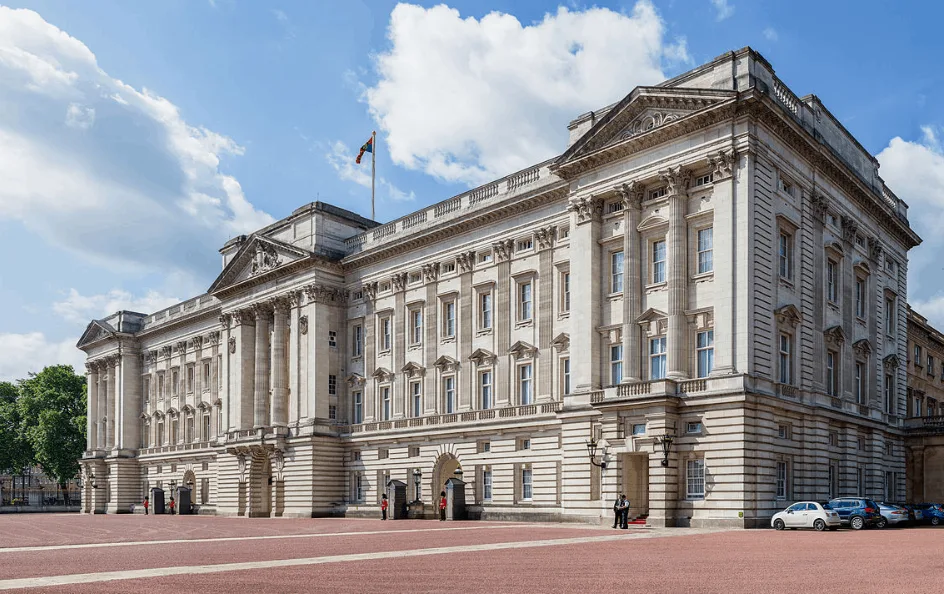
3. Winter Palace
The Winter Palace is another palace that was built to emphasize the power of the leaders of Russia during the 18th, 19th, and 20th centuries. It’s located in Saint Petersburg in the northwest of the country and was the official residence of the Russian Emperors from 1732 to 1917.
It’s one of the biggest palaces in the world and contains over 1,500 rooms, 1,886 doors, and 117 staircases. Its interior was largely destroyed by a fire in the year 1837 and rebuilt in the typical 19th-century Rococo style. The palace is now one of the buildings that make up the popular Hermitage Museum.

4. Potala Palace
Potala Palace is located in the city of Lhasa in the mountainous region of Tibet. It was the winter palace of the Dalai Lamas from 1649 to 1959. Its construction was commissioned by the 5th Dalai Lama and started in 1645.

The palace has been gradually expanded over the centuries and eventually became a massive palace containing over 1,000 rooms, over 10,000 shrines, and about 200,000 statues. It now serves as a museum and popular tourist attraction.
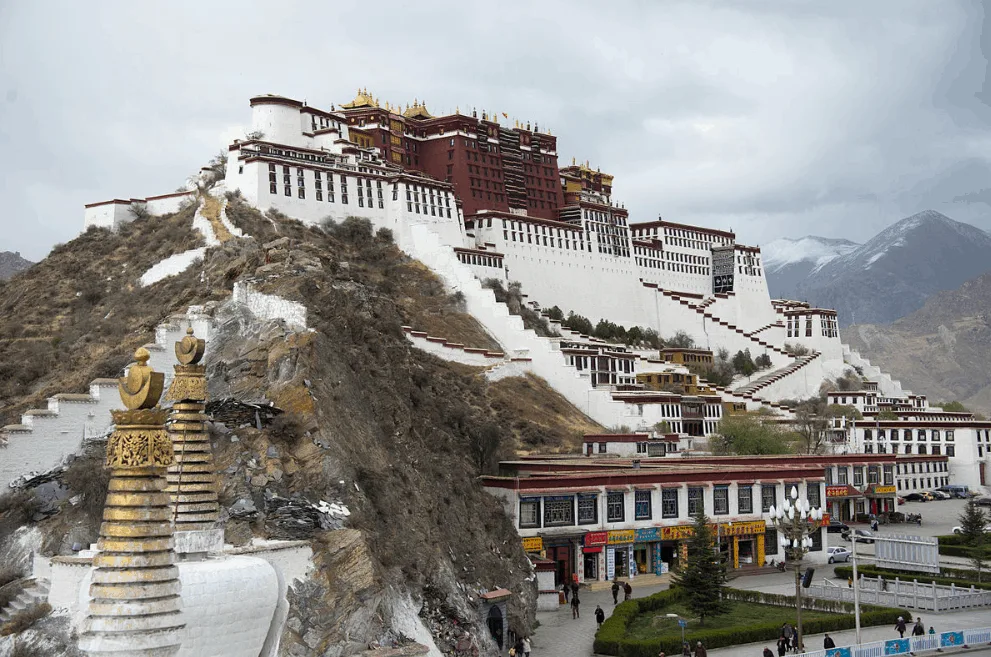
5. The Alhambra
The Alhambra was originally built as a castle and small fortification on top of Ancient Roman ruins. It was turned into a palace in the 13th century by the Emirate of Granada in southern Spain and gradually expanded until the Christian Reconquista in 1492.
This building complex in Granada eventually became the Royal Court of Ferdinand and Isabella and the palace was partially redesigned in the Renaissance style but eventually fell into disrepair for centuries. It wasn’t until the defeat of Napoleon in the early 19th century that the palace was rediscovered and restoration works were undertaken to bring back its old glory.

6. Schönbrunn Palace
Schönbrunn Palace was the summer residence of the Habsburg Rulers and is located in the Hietzing district of the capital of Austria, Vienna. The construction of the current palace dates back to halfway through the 18th century during the reign of empress Maria Theresa, the mother of Marie Antoinette.
The palace was continuously expanded and now contains 1,441 rooms and contains multiple architectural styles ranging from Neo-Classical to Rococo. The palace also has a massive garden with numerous fountains, sculptures, and additional buildings.

7. Mysore Palace
Mysore Palace is located in the city of Mysore in the Indian State of Karnataka in the southwestern part of the country. It was constructed between 1897 and 1912 and served as the official residence of the Wadiyar dynasty and the seat of the Kingdom of Mysore.
The city of Mysore is referred to as “The City of Palaces” because there are 6 more palaces. The Mysore Palace was constructed on the location of the old fort and is considered to be the main palace. It’s now one of the most popular buildings in India only just behind the world-famous Taj Mahal.
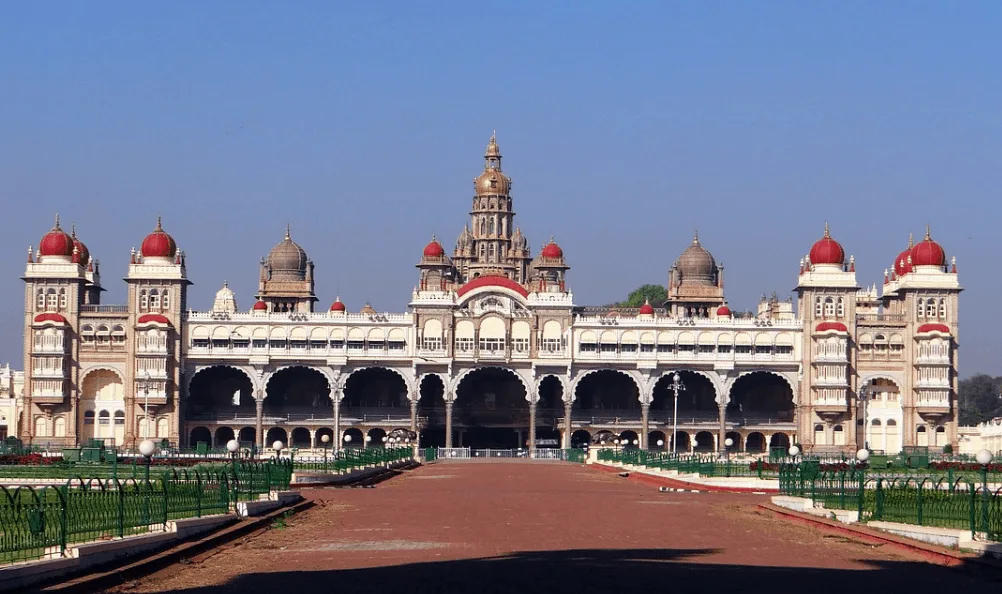
8. Topkapi Palace
The Topkapi Palace is located in the east of the Fatih district in the capital of Turkey, Istanbul. It was constructed in the 15th century after the Conquest of Constantinople, which marked the end of the Eastern Roman Empire in 1453, to serve as the main residence of the Ottoman Sultans.
Construction of the palace started in 1459 and it was originally called the “New Palace.” It wasn’t until the 19th century that it was referred to as “Topkapi” which translates to “cannon gate.” The palace was turned into a museum in 1924, shortly after the end of the Ottoman Empire a year earlier.
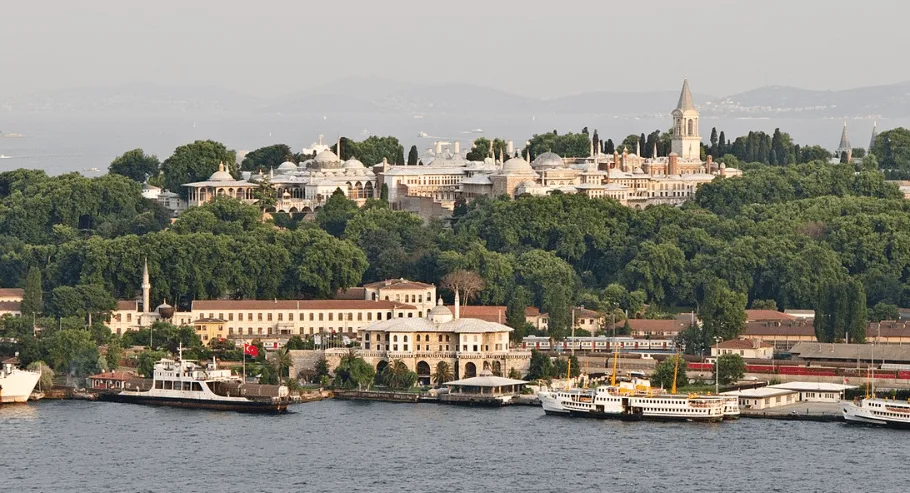
9. Forbidden City
The Forbidden City is a large palace complex in the center of the Chinese city of Beijing. It was the official residence of the Emperor of China for over 500 years, from 1420 to 1924, from the Ming Dynasty, which is famous for constructing most parts of the Great Wall of China, to the end of the Qing Dynasty.
The enormous complex was constructed between 1406 and 1420 and covers an area of 72 hectares (over 180 acres). The complex consists of 980 buildings and exemplifies the traditional Chinese architectural style. The Forbidden City was turned into a museum in 1925 that welcomes millions of visitors every year.
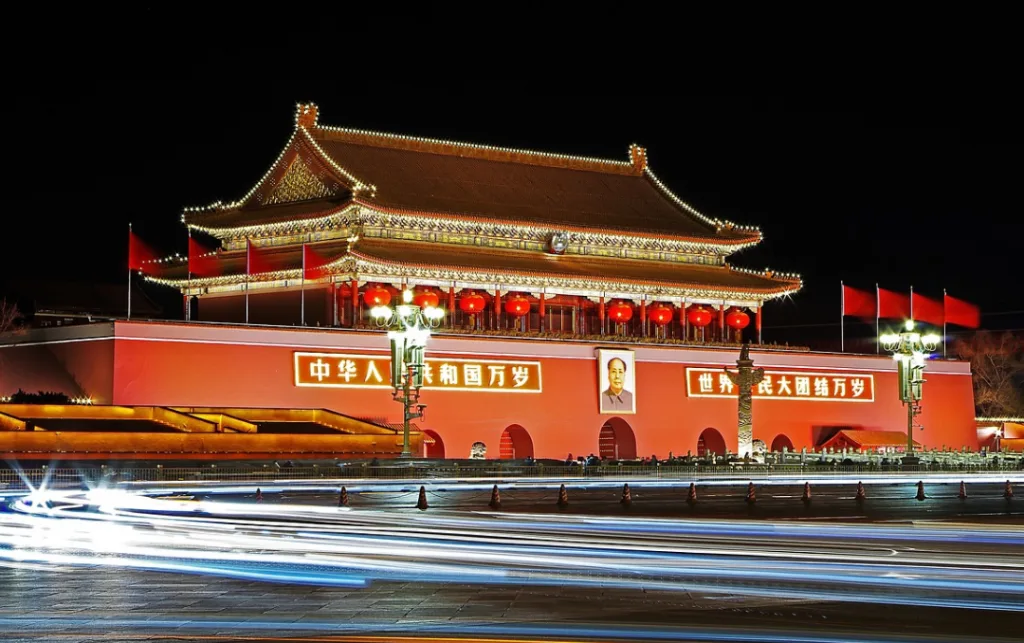
10. Palazzo Pitti
Palazzo Pitti also referred to as the “Pitti Palace,” is a massive Renaissance building in the center of the Italian city of Florence. It’s located on the south of the Arno River, not too far from the Ponte Vecchio. Above this bridge, there’s a walkway called the “Vasari Corridor” which connects the Palace with the Palazzo Vecchio through the Uffizi Gallery.
Most parts of the current palace were completed in the year 1458 and it was originally the residence of a rich Florentine banker named Luca Pitti, from who the building got its name.
It was bought the following century in the year 1549 by the Medici Family and served as the official residence of the ruling families of the Grand Duchy of Tuscany. The palace houses numerous works of fine art from artists such as Raphael, Rubens, Van Dyck, Caravaggio, and Verrocchio.
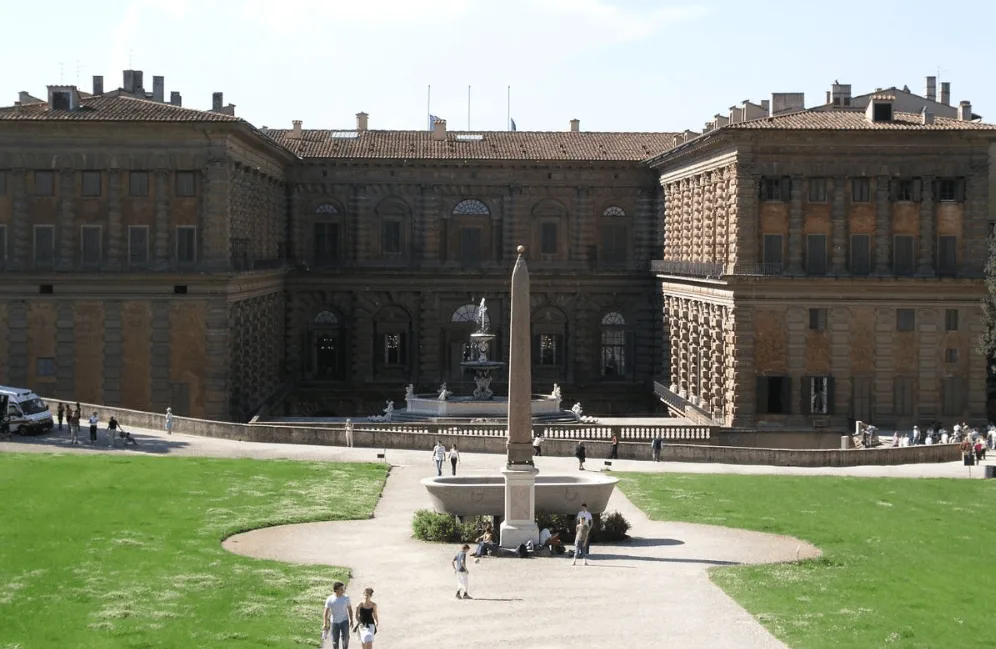
11. Peterhof Palace
Peterhof Palace was built in the early 18th century by Peter the Great, who was on a quest to build a new capital for Russia, Saint Petersburg. He founded the city in 1703 and started the construction of a summer residence just west of the city in 1709.
What originally would become merely a summer residence eventually became one of the biggest palace complexes in all of Russia. This was mainly because he had visited the Palace of Versailles in 1717 and wanted to replicate the extravagance of the French royal palace.
The original palace was completed in the year 1728, 3 years after Peter the Great had died. The work was continued by his successors, and mainly Elizabeth of Russia seriously expanded the palace to what it would become, a palace with the nickname the “Versailles of Russia.”

12. Royal Palace of Madrid
The Royal Palace of Madrid is the largest functioning palace in Europe as it contains well over 3,400 rooms. It was originally a Moorish stronghold that was constructed in the 9th century and served as a fortification in the Middle Ages.
It wasn’t until the 16th century that the process of turning the original castle into a massive palace started, something that would take multiple centuries. Therefore, the palace consists of multiple styles such as the Baroque and Neoclassical. It also has several gardens and plazas surrounding it.
The palace has become one of the most popular tourist attractions in Madrid and welcomes about 1.5 million visitors every year. It houses a lot of art, contains an armory with unique pieces, a magnificent Royal Pharmacie, and holds the Crown and Scepter of Spain dating back to the 18th century as well.
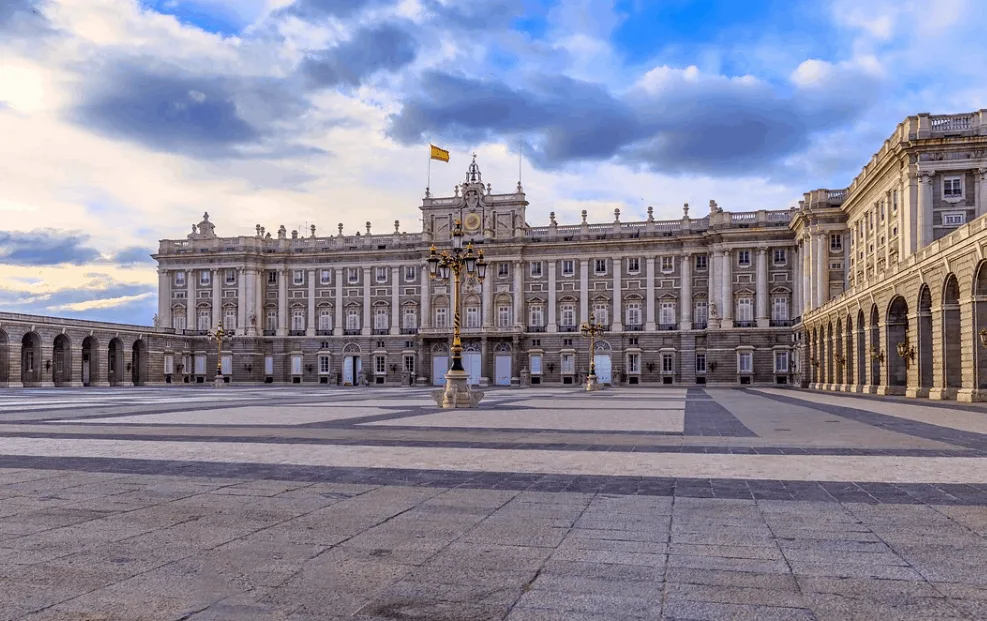
13. Charlottenburg Palace
Charlottenburg Palace is located in the Charlottenburg-Wilmersdorf borough of Berlin, just west of the historical center of the city. It was constructed at the end of the 17th century by Frederick I and named after his wife Sophie Charlotte, who passed away in the early 18th century.
A few years after the original version of the palace was completed it was seriously expanded based on various other Baroque Palaces all across Europe. Its interior includes some of the most amazing Baroque designs ever built and numerous frescoes were painted on the walls of various rooms.
The palace was seriously damaged during World War II and it was feared it was about to be destroyed, but instead, it was completely rebuilt to its former glory. It’s now open to the public and has become one of the most popular tourist attractions in Berlin.
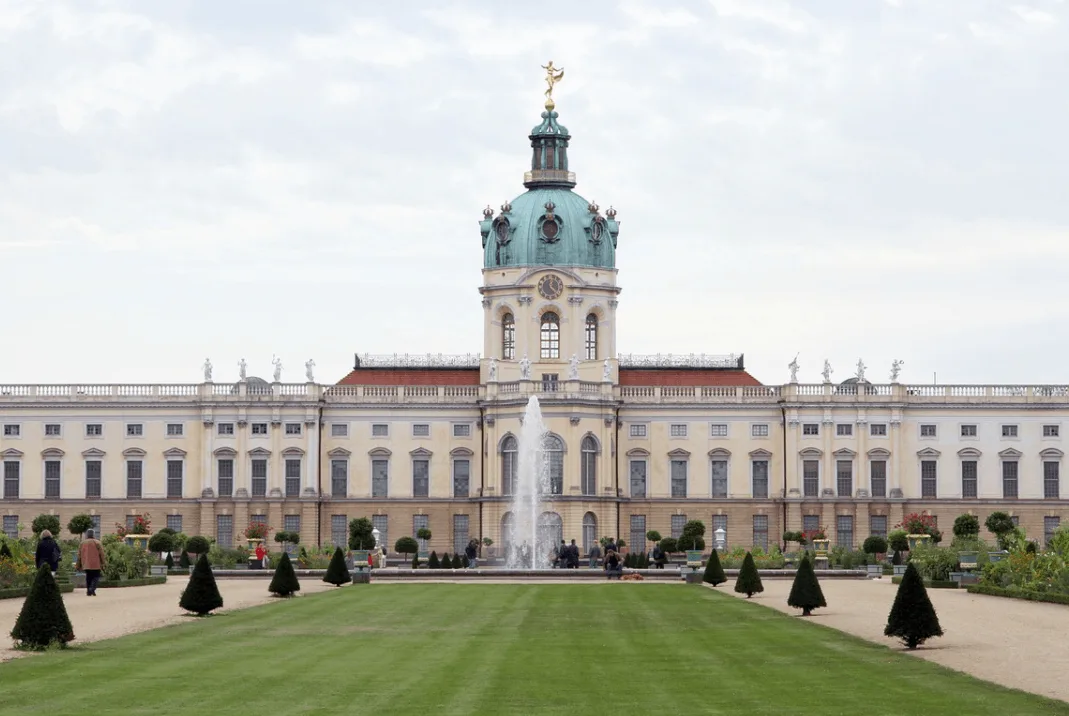
14. Luxembourg Palace
Luxembourg Palace is located just south of the historical center of Paris, right in the heart of the city. It was commissioned by Marie de Medici in 1615 which was just 5 years after her husband, King Henry IV had died in 1610 and she became the regent to her son Louis XVIII.
The original version of the palace was completed 30 years later in the year 1645, even though she moved into it with her family in the year 1625. It eventually became a museum halfway through the 18th century and became the predecessor of the Louvre Museum which opened its doors in 1793.
The palace is surrounded by a magnificent garden called the “Luxembourg Garden” that covers an area of 25 hectares and which is one of the most popular spots in Paris to relax. The building itself is now used by the French Senate, making it one of the most important buildings in France!
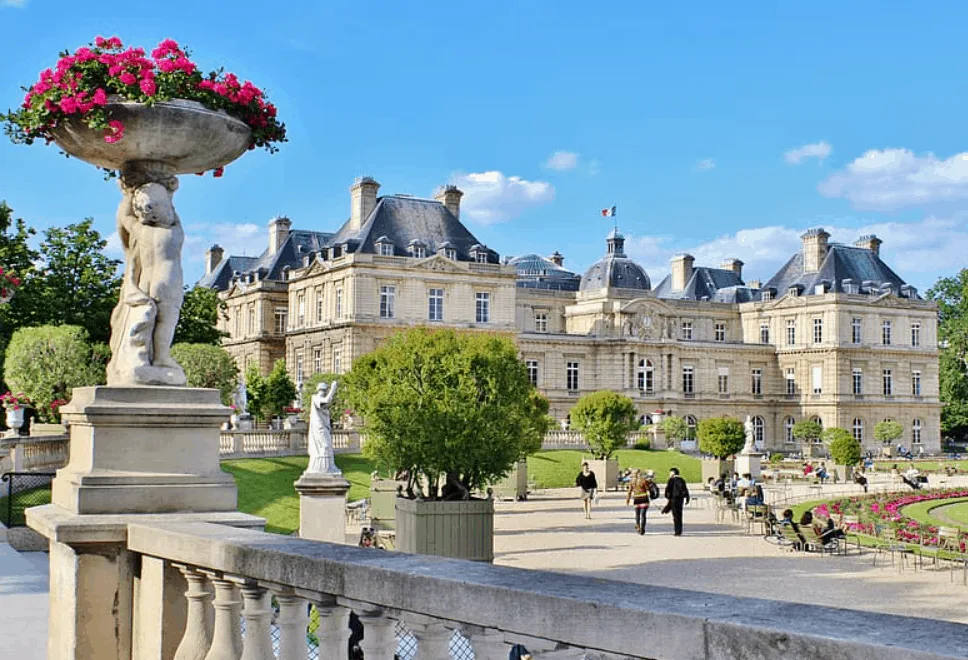
15. Sanssouci Palace
Sanssouci Palace is located in the city of Potsdam, just to the southwest of Berlin. It’s one of the most famous palaces in the world and was constructed between 1745 and 1747 by King Frederick II, also referred to as Frederick the Great, and remained the summer residence of the kings of the German Empire until the end of World War I in 1918.
It’s a relatively small palace because it was intended to become a place to relax for Frederick outside of Berlin. The main block of the palace only consists of 10 rooms and its most prominent feature is the terraced vineyard facing it on the southern slope of the area. The complex consists of multiple buildings, including a major palace constructed to impress referred to as the “New Palace” or “Neues Palais,” as well as multiple other buildings in the massive park.
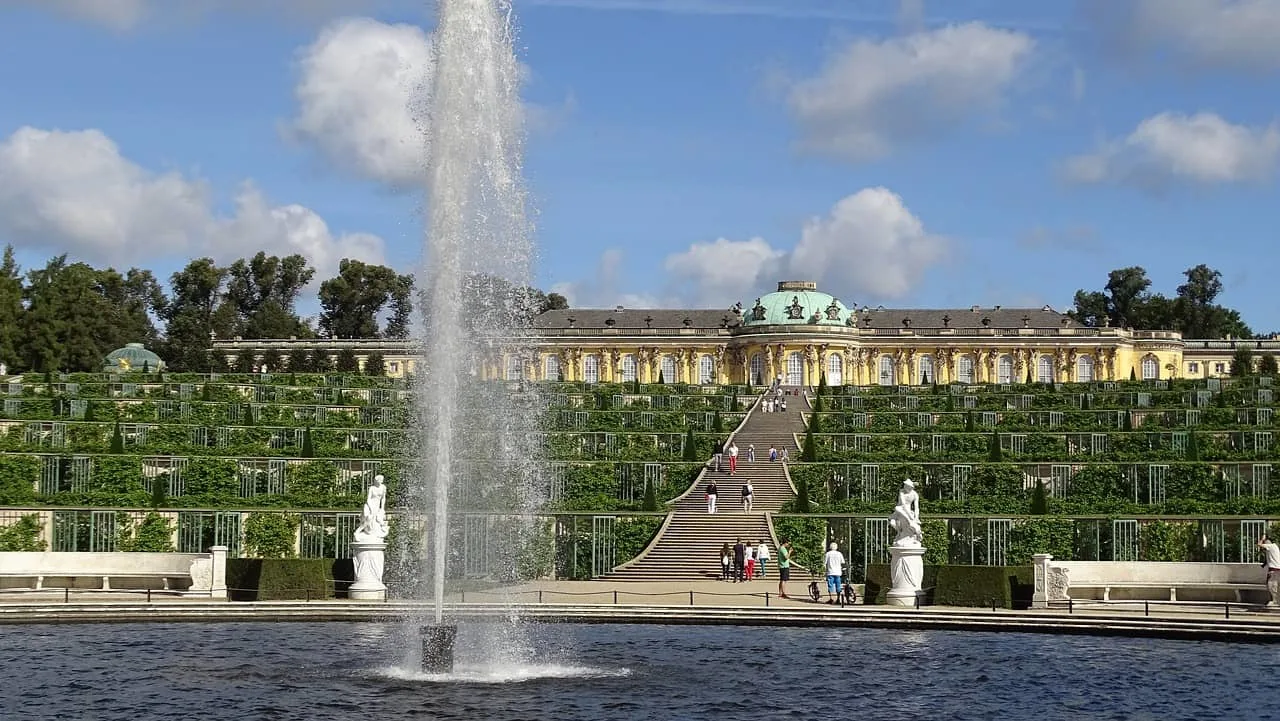
16. Kensington Palace
Kensington Palace is located in the Inner London Royal Borough of Kensington and Chelsea, the smallest borough in all of London just west of the City of Westminster. Its immense gardens are adjoined by the famous Hyde Park, one of the so-called “green lungs’ in the center of London. The palace has been a royal residence since the late 17th century and is still the official residence of several members of the British Royal Family today.
The palace is also famous for being the birthplace of Queen Victoria, who was born in the year 1819 and spent her entire childhood and adolescent life at the palace. Because of her, the deteriorated palace wasn’t demolished in the latter half of the 19th century. It was finally restored in 1897 and the State Rooms have been open to the public since the year 1899. The palace is still one of the major tourist attractions in London today!
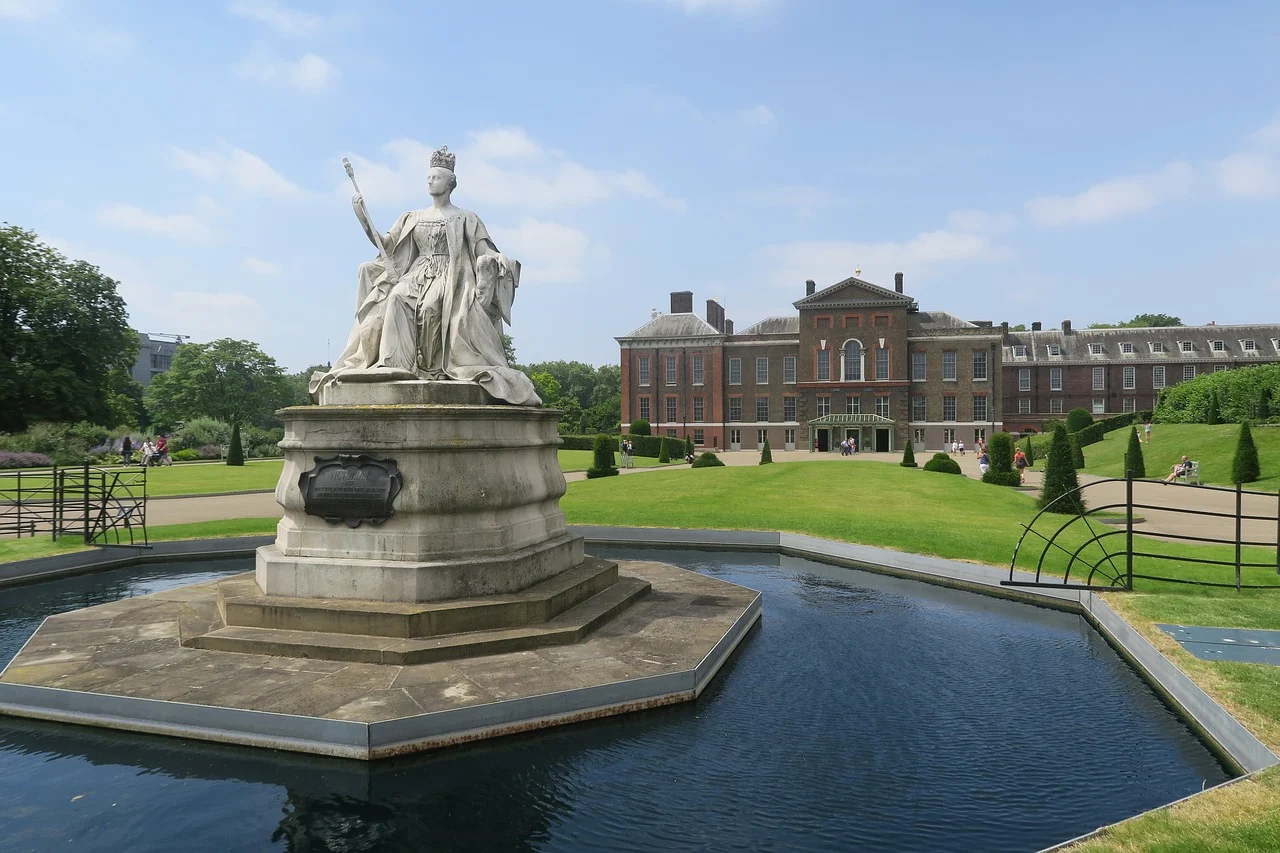
17. Blenheim Palace
Blenheim Palace is located in the small town of Woodstock, Oxfordshire, in the South East England Region. It was named after the Battle of Blenheim which took place in 1704 in the town of Blindheim in Bavaria, Germany, and which resulted in a victory of the British over the French and Bavarians. The battle was led by John Churchill, who was not only awarded the title of 1st Duke of Marlborough, but also the land on which the palace was built.
The palace was largely constructed between 1705 and 1722 and is considered to be one of the prime examples of the English Baroque architectural style. It’s notable as the birthplace of Sir Winston Churchill and still serves as the seat of the Dukes of Marlborough today. It’s also a popular tourist attraction and has been designated as a UNESCO World Heritage site in 1987!

18. Palazzo Farnese
Palazzo Farnese or “Farnese Palace” is one of the most amazing Renaissance palaces in the city of Rome. It was constructed in the 16th century, starting around 1515, and is considered to be one of the most imposing Renaissance palaces in the city. It was commissioned by Alessandro Farnese of the powerful Farnese family, a man who eventually became Pope Paul III in the year 1534.
This was also the year that Michelangelo was hired to further expand the palace and add some unique design elements. The palace was further expanded at the end of the 16th century and the interior was decorated with magnificent frescoes by some of the most renowned artists of the time. The palace was eventually acquired by the French Government in the year 1874 and now serves its purpose as the French Embassy in Italy.
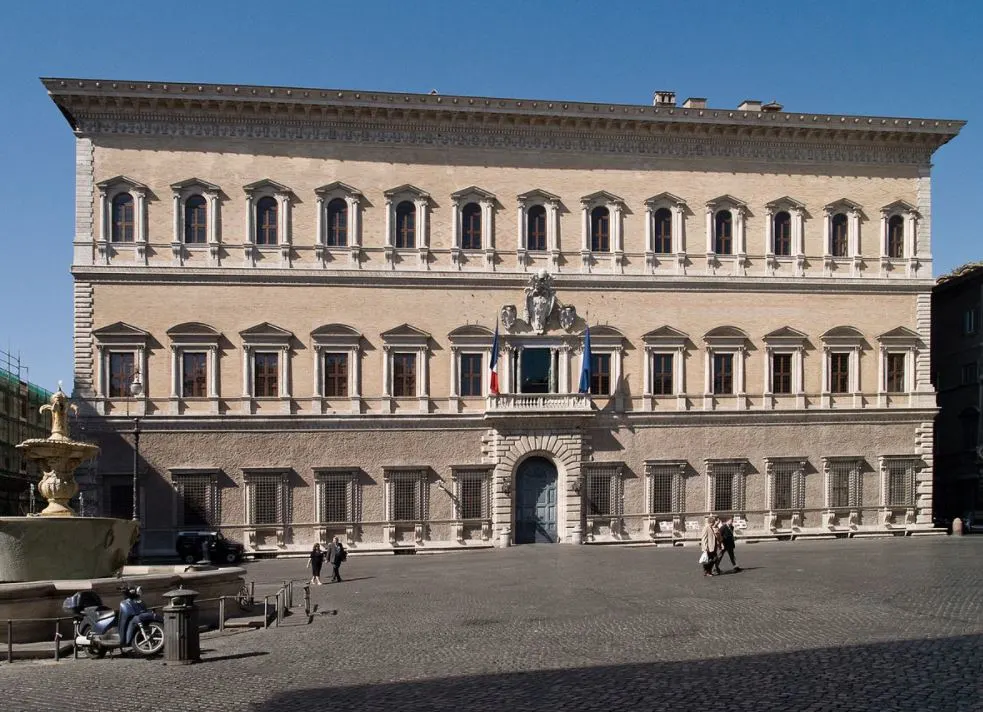
19. Holyrood Palace
Holyrood Palace is one of the most amazing buildings in Edinburgh, the capital of Scotland. It’s situated on the opposite end of the so-called Royal Mile of Edinburgh Castle, the historical castle on top of a hill called Castle Rock which overlooks the city. The history of the castle goes back to the 12th century when King David I of Scotland founded an Augustinian Abbey on the site, a building that now lies in ruin.
The original palace was constructed in the early 16th century and expanded in the 1530s to include additional Royal apartments in the northwest tower. This tower was integrated into the design of the current palace which was constructed in the 1670s. Today, the palace serves as the official royal residence of the British Monarch in Scotland, and as one of the most popular tourist attractions in the Scottish capital.
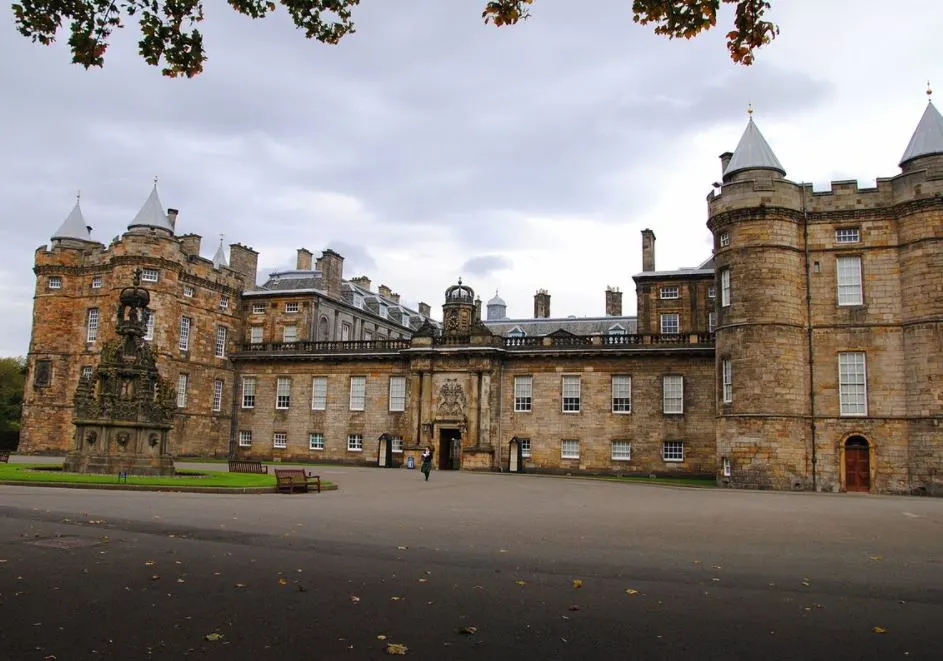
20. Tokyo Imperial Palace
Tokyo Imperial Palace is the official residence of the Emperor of Japan and his family. It’s situated in an amazing landscaped park in the Chiyoda district in central Tokyo, the capital of the country and the biggest metropolis in the world. The palace was constructed on the grounds of the old Edo Castle of which construction started in the year 1457 and consisted of numerous structures. Most of the old buildings have been destroyed by natural calamities and war.
Many of the buildings inside the Imperial complex today date back to the 1960s. Many of the structures of the Meiji Period were destroyed during the Tokyo bombings in March 1945 and only a few iconic guard towers are what remain. Apart from serving as the official residence, the compound also consists of multiple other Imperial residences, offices, an archive, museums, and an immense public park referred to as the East Gardens, a great place to relax in the historical heart of Tokyo.

21. Royal Palace of Caserta
The Royal Palace of Caserta was originally commissioned by King Charles III of Spain in 1752 while he was still the King of Naples. It’s located in the city with the same name in southern Italy at a distance of about 40 kilometers (25 miles) north of the large city of Naples. The huge palace never became his official residence because he became the King of Spain in 1759 and the work was continued by his son for multiple decades.
The result is one of the biggest palaces in the world which is the biggest palace in terms of volume. It consists of 1,200 rooms, a wide number of entertainment facilities, a couple of dozen state apartments, and over 40 monumentally decorated rooms. The palace is adjoined by an equally impressive garden that was constructed in a hilly area and which features a remarkable canal. This is the most magnificent extension of one of the greatest examples of Baroque architecture that you’ll ever come across.
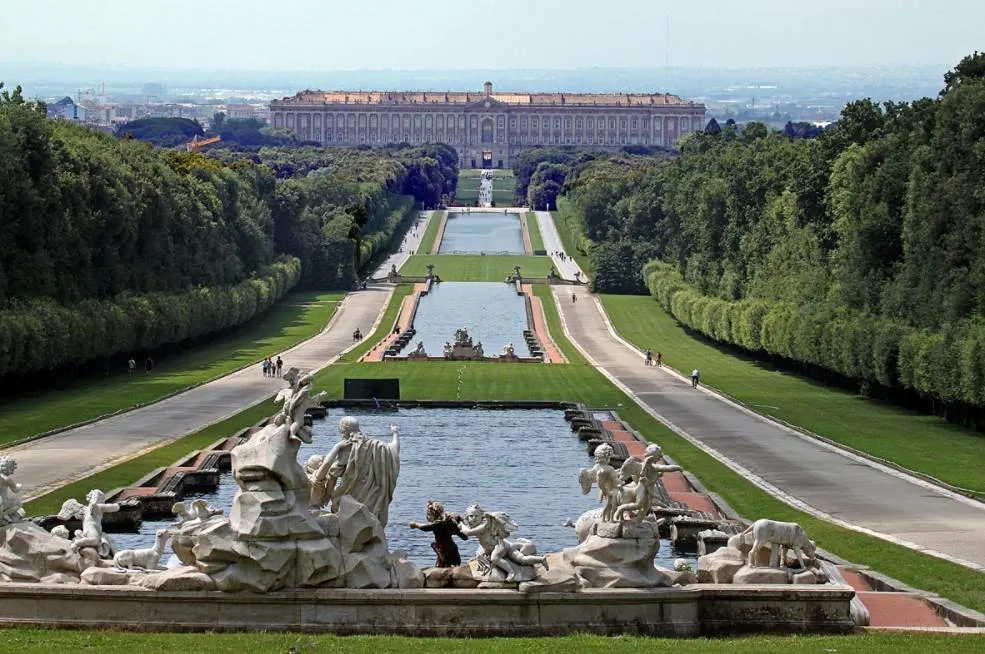
22. Hawa Mahal
Hawa Mahal is located in the city of Jaipur in northern India and was constructed in 1799, not too long after the city was founded earlier in the 18th century. It’s one of the structures that make up the immense City Palace, a collection of buildings and palaces that served as the seat of the Maharadja and the administrative offices in the region.
The palace is world-famous for its astonishing façade made of pink sandstone. This architectural marvel features 959 widows and was designed in such a way that the women of the royal court could watch festivities on the street below without being seen. The palace’s name is “Palace of the Wind,” a reference to the breeze that can be felt inside of it. Today, the palace serves as a popular tourist attraction and has become a symbol of the city of Jaipur.

23. Royal Palace of Brussels
The Royal Palace of Brussels is one of the most stunning buildings in Brussels. It’s located right in the heart of the city and faces Brussels Park, the largest urban park in the heart of Belgium’s capital. The building serves as the place where the King of the Belgians handles his state affairs. This means it’s not his official residence, which is the Palace of Laeken in the northern part of the city.
The location of the palace was once occupied by a huge medieval building called the Palace of Coudenberg, a castle that was used by the official rulers of the region. This structure burned to the ground in 1731 and was replaced by the palace later in the 18th century. King Leopold II expanded the rather humble palace and transformed it into one of the greatest palaces in Europe.

24. Royal Palace of Amsterdam
The Royal Palace of Amsterdam is locally known as “Paleis op de Dam,” a reference to the location of the palace at Dam Square. This is right in the historical heart of Amsterdam, the capital city of the Netherlands. It’s one of the 3 royal palaces used by the Dutch Monarchy, although these are owned by the Dutch state.
The palace was constructed between 1648 and 1655 and is one of the most stunning buildings constructed during the Dutch Golden Age. It features a distinctive Dutch Classicist architectural design that focused on a sober design with classical elements. Remarkably, the building was constructed as the Town Hall of Amsterdam and served this purpose until the early 19th century.

25. Drottningholm Palace
Drottningholm Palace is an amazing Baroque palace located just west of Stockholm, the capital city of Sweden. It was constructed in the 17th century and has served as the summer residence for the Swedish royal family for multiple centuries. It features a Baroque and Anglish-style garden, a theater, a Chinese Pavilion, and a lavish Rococo interior design.
The palace has been used as the main residence of the Swedish royal family since 1981 and it has been a popular tourist attraction just outside of Stockholm since the early 19th century. It’s a UNESCO World Heritage site and its location on an island makes it one of the most picturesque palaces in northern Europe.
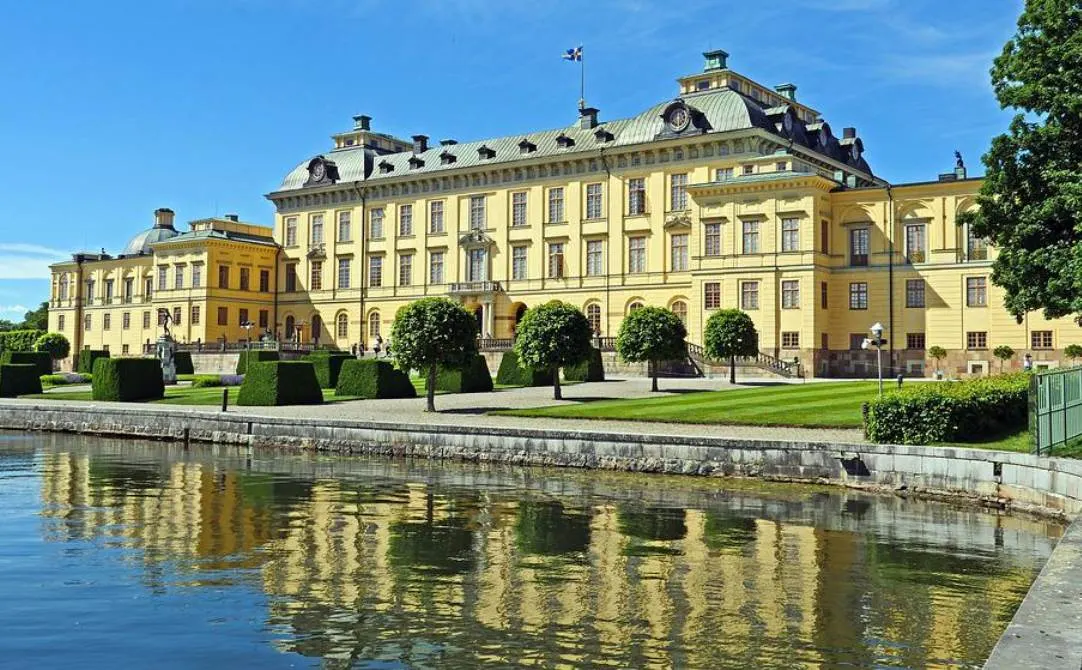
26. Zwinger Palace
The Zwinger Palace is a structure located on the northwestern edge of the old town section of Dresden. It was constructed in the 18th century between 1710 and 1728 in the Baroque architectural style. It is considered to be one of the most amazing examples of Baroque architecture in Germany.
The Semper Gallery was added to the palace complex in the 19th century and is home to the Gemäldegalerie Alte Meister, the Old Picture Gallery in Dresden. Here you can find some of the most stunning paintings by Old Masters in Europe. Many of the buildings were destroyed during World War II but were all rebuilt by 1963.
